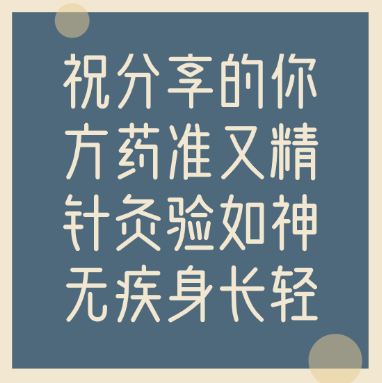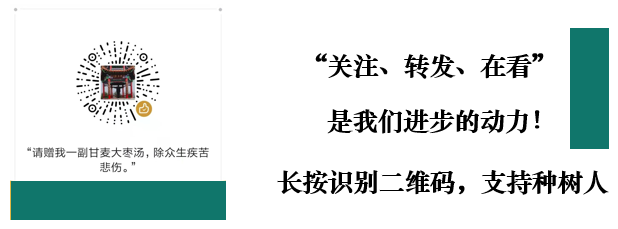

Temporal, Frontal, and Orbital Pain for 2 Months
Diagnosis Scene
A 16-year-old male patient was diagnosed on January 2, 1988. The patient began experiencing dizziness and headaches six months prior. Two months ago, after a high fever (39°C) due to a cold, the headache suddenly worsened, accompanied by drowsiness, vomiting, dilated pupils, blurred vision, sore throat, and difficulty swallowing, leading to an emergency admission to our hospital.
Western medical diagnosis: 1. Viral encephalitis; 2. Intracranial occupying lesion? (Subsequent CT scans at West China Medical University and Chengdu Army General Hospital ruled this out).
During a two-week hospitalization, two critical condition notifications were issued. Despite intensive treatment, the critical symptoms disappeared, but the headache persisted, leading to discharge with a prescription for Chinese medicine.
At that time, the main symptoms were: bilateral temporal, frontal, and orbital pain; occurring three times a day, each episode lasting about 2 hours, with frequent vomiting of thin saliva and accompanying throat pain.
Initially treated with Dan Zhi Xiao Yao San (Dan Zhi Relaxation Powder) combined with Yin Qiao San (Yin Qiao Powder) for 17 doses without effect; switched to Cang Er San (Cang Er Powder), Sheng Ma Ge Gen Tang (Sheng Ma and Ge Gen Decoction), Xiao Chai Hu Tang (Minor Bupleurum Decoction) combined with Wu Zhu Yu Tang (Wu Zhu Yu Decoction) with modifications (the formula included 19 ingredients, among which were Wu Zhu Yu (Evodia rutaecarpa) and Sheng Jiang (Fresh Ginger) each 3g, Dang Shen (Codonopsis pilosula) and Da Zao (Jujube) each 10g). After 20 doses, there was still no significant effect.
Current diagnosis: Symptoms as before, but recently increased irritability, dry mouth, continuous drinking without relief, poor appetite, and loose stools, with a red tongue, small red dots densely distributed on the edges and tip, a white slightly yellow thick greasy coating, and a pulse that is wiry, slippery, and slightly rapid. (Upon further inquiry into the medical history, the patient had been swimming daily in the river from March to October for several years, often consuming fruits and cold foods; due to academic pressure, he frequently drank strong tea to stay alert.)
Pattern Differentiation and Treatment
According to the “Shang Han Lun” (Treatise on Cold Damage) section 378, “For dry retching, vomiting saliva, and headache, Wu Zhu Yu Tang is the main treatment.” Since this section is in the Jue Yin chapter, the headache location should be at the vertex (the Jue Yin liver channel meets the Du channel at the vertex); thus, the pattern is undoubtedly cold.
Based on the principle of “what is internal must manifest externally,” the overall symptoms and tongue-pulse should exhibit a cold pattern. Clinical verification confirms this general rule. However, it is worth noting that this rule cannot encompass everything. In recent years, I have treated some patients with headaches accompanied by nausea and vomiting of clear water or thin saliva who did not exhibit the full body symptoms and tongue-pulse of liver and stomach deficiency cold, nor did they have turbid yin rising. Some even presented with heat signs, and the headache location was not at the vertex. If one is constrained by general rules, they may hesitate to use or heavily rely on Wu Zhu Yu Tang.
This reminds us to avoid fixed thinking in clinical practice. After repeated consideration of this case, I believe that the headache accompanied by vomiting of thin saliva is an objective indication for using Wu Zhu Yu Tang. Unfortunately, the previous physician used a small dose and mixed it within a large formula, which limited its effectiveness; why not let it stand out and take on the responsibility to achieve results?
However, with the four diagnostic methods combined, how can we use it when we see a clear heat pattern?We cannot use it, but what else can we use? We can only further inquire into the medical history. The patient had been swimming daily in the river from March to October for several years, often consuming fruits and cold foods; due to academic pressure, he frequently drank strong tea to stay alert.
At this point, the decision was made to use Wu Zhu Yu Tang: Wu Zhu Yu and Sheng Jiang each 15g, Dang Shen and Da Zao each 30g. I instructed him to try taking 2 doses; if after taking it, the dry mouth and throat pain worsened, he should still complete the course.
Second diagnosis (January 4, the author was out, and Teacher Jiang Erxun took over): After taking 1 dose, the temporal, frontal, and orbital pain and throat pain significantly reduced, no longer vomiting thin saliva, and dry mouth and irritability also decreased; after completing 2 doses, the pain basically disappeared. However, there was slight fullness in the abdomen. The original formula was adjusted, reducing Dang Shen and Da Zao to 15g each, adding Hou Po (Magnolia Bark) 15g and Fa Xia (Pinellia) 10g, for 3 doses.
Third diagnosis (January 8): Pain completely disappeared, appetite improved, abdomen relaxed, and bowel movements returned to normal. Upon examining the tongue, it remained as before, with a slightly yellow thin coating; the pulse showed no rapid signs, still wiry and slippery. I prescribed Liu Jun Zi Tang (Six Gentlemen Decoction) with Gui Zhi (Cinnamon Twig) added (to incorporate the meaning of Ling Gui Zhu Gan Tang), instructing him to take it frequently for consolidation. To this day, three years later, there has been no recurrence.
Reflection and Clarification
[Student A] Preventing fixed thinking is certainly correct, but we cannot ignore the clear heat signs of the patient! Can Wu Zhu Yu Tang be used for heat pattern headaches? The patient clearly has a set of heat signs, such as dry mouth, continuous drinking without relief, a red tongue with small red dots densely distributed on the edges and tip, a white slightly yellow thick greasy coating, and a pulse that is wiry, slippery, and slightly rapid; why can we still use the hot and spicy Wu Zhu Yu Tang?
Wu Zhu Yu Tang has many reports of curing headaches, and its pathogenesis for headaches is liver and stomach deficiency cold, with turbid yin rising. Wu Zhu Yu Tang warms the liver and tonifies the stomach, elevating the clear and descending the turbid, accurately targeting the pathogenesis, hence its excellent efficacy.
However, as mentioned earlier, this case does not exhibit the full body symptoms and tongue-pulse of liver and stomach deficiency cold, with turbid yin rising—such as coldness in the limbs, cold pain in the abdomen, pale tongue with white slippery coating, and wiry or deep and slow pulse; on the contrary, there are obvious heat signs. It is indeed difficult to understand why the teacher prescribed the original formula of Wu Zhu Yu Tang with such a heavy dosage.
[Teacher] If I did not consider the heat signs, I would not have inquired deeply into the patient’s lifestyle history. The patient’s lifestyle history of swimming daily in the river from March to October, often consuming fruits and cold foods, and drinking strong tea is quite enlightening. Based on the lifestyle history and the medicinal effects, it is likely that cold accumulation has long been retained, preventing the body’s yang qi from flowing smoothly, leading to stagnation and heat, or that the cold and dampness are forcing the yang qi to rise, resulting in a floating heat pattern. The key to using Wu Zhu Yu Tang in this case was capturing the characteristic symptoms—headache accompanied by vomiting of thin saliva; secondly, it involved a comprehensive analysis of the lifestyle and treatment history, revealing the essence of yin cold through the phenomenon of floating heat.
[Student A] It seems that the teacher is using a pattern-symptom relative differentiation method. My understanding is that the relative differentiation of Wu Zhu Yu Tang means that whenever we see “dry retching, vomiting saliva, and headache,” we can first choose and exclusively use Wu Zhu Yu Tang without needing to meticulously consider whether the patient exhibits the full body symptoms and tongue-pulse of liver and stomach deficiency cold, turbid yin rising, or whether it is an external or internal injury, meridian or organ involvement, or the duration of the illness, etc. Is that correct?
[Teacher] That is correct. Because the characteristic symptoms described by Zhang Zhongjing of “dry retching, vomiting saliva, and headache” already reflect the special essence of this disease quite adequately. As Cheng Wujin noted in his annotations on the “Shang Han Lun,” “Dry retching and vomiting saliva indicate internal cold; headache indicates cold qi attacking upwards. Wu Zhu Yu Tang warms the interior and disperses cold.” In other words, Zhang Zhongjing’s differentiation of this pattern is already accurate and has provided an effective formula; as long as the symptoms match, it can be easily applied, demonstrating the beauty of simplicity and mastery. The rapid efficacy of this case’s headache is primarily due to this. It is worth reflecting that in recent years, there seems to be a tendency to emphasize the flexibility of pattern differentiation (which is correct) while neglecting the principle of relative differentiation of formulas and symptoms. This is not conducive to the inheritance and promotion of Zhang Zhongjing’s theories.
[Student D] When the teacher used the original formula of Wu Zhu Yu Tang to treat headaches, what are the usual dosages of the four medicinal ingredients in the formula?
[Teacher] For initial administration, Wu Zhu Yu and Sheng Jiang should not be less than 15g each, and Dang Shen and Da Zao should not be less than 30g; for moderate illness, the dosage can be reduced.
Expanding Thoughts:
Regarding the consideration of cold dampness versus damp heat,Teacher Heng Wei once explained:Shen Shi Da Wu Tou Tang (Shen Shi’s Major Aconite Decoction).
Shen Shi Da Wu Tou Tang composition: Wu Tou (Aconitum), Xi Xin (Asarum), Chuan Jiao (Sichuan Pepper) each 1 liang, Fu Zi (Aconite) and Gui Xin (Cinnamon Heart) each 2 liang, Gan Jiang (Dried Ginger) 3 liang, Bai Shao (White Peony) 2 liang, Dang Gui (Angelica) 3 liang, Zhi Gan Cao (Honey-fried Licorice) 2 liang, Da Zao (Jujube) 20 pieces, Du Huo (Angelica Pubescens) 4 liang, Fang Feng (Siler) 2 liang, Fu Ling (Poria) 3 liang, Qin Jiao (Gentiana) 2 liang.
Indications for wind-cold foot bi pain,if heat toxin is present, more doses are better.
Clinically summarized as follows:
First, for treating wind-damp bone pain;
Second, for treating gynecological diseases caused by sudden wind-cold;
Third, for skin diseases of a damp-heat nature in the body’s yin regions.
Why is this? Everyone please remember a saying from Zhang Zi He: “All diseases can be resolved by damp-heat, opening the seamless lock of Xuanyuan.”
Usually, I treat wind-damp diseases frequently, and using the original formula of Shen Shi Da Wu Tou Tang recently for treating postpartum wind-damp diseases has been remarkably effective, whether for chronic or new conditions, the results have been very ideal. Everyone can try it; in my clinical practice, I prescribe this formula with 1 liang of yellow wine to be taken with the medicine. This is also some of my clinical experience. Most patients recover within 1 to 2 months.

Copyright Statement
This article is excerpted from “The Record of TCM Inheritance.” The content is for clinical thought reference only, sharing this article is for the purpose of dissemination and learning exchange, and does not hold responsibility for the views expressed in the article. Non-professionals should not blindly try medications; if needed, please use medications under the guidance of a professional physician. If there is any infringement, please contact us (L-PeiGen) for deletion.
| Previous | Review |
A Chinese patent medicine opens the channel for eliminating turbidity, and once opened, the body feels relaxed.

Applause and Cheers

· END ·
I am Peigen, a young TCM physician, and I enjoy planting trees in my spare time.
For communication | Cooperation | Please add WeChat: L-PeiGen Long press the image to scan and follow


